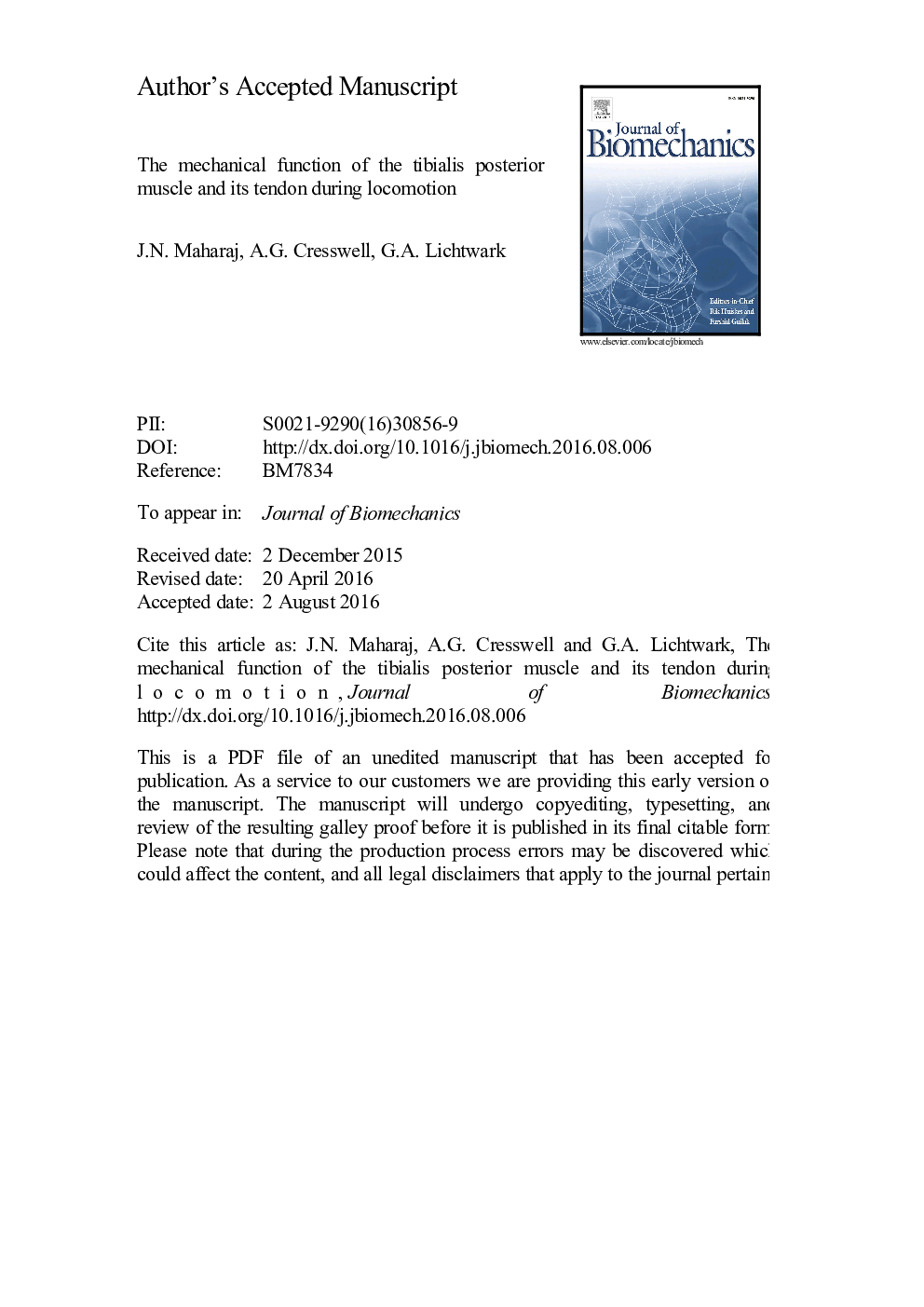| Article ID | Journal | Published Year | Pages | File Type |
|---|---|---|---|---|
| 5032526 | Journal of Biomechanics | 2016 | 22 Pages |
Abstract
The tibialis posterior (TP) muscle is believed to provide mediolateral stability of the subtalar joint during the stance phase of walking as it actively lengthens to resist pronation at foot contact and then actively shortens later in stance to contribute to supination. Because of its anatomical structure of short muscle fibres and long series elastic tissue, we hypothesised that TP would be a strong candidate for energy storage and return. We investigated the potential elastic function of the TP muscle and tendon through simultaneous measurements of muscle fascicle length (ultrasound), muscle tendon unit length (musculoskeletal modelling) and muscle activation (intramuscular electromyography). In early stance, TP fascicles actively shortened as the entire muscle-tendon unit lengthened, resulting in the absorption of energy through stretch of the series elastic tissue. Energy stored in the tendinous tissue from early stance was maintained during mid-stance, although a small amount of energy may have been absorbed via minimal shortening in the series elastic elements and lengthening of TP fascicles. A significant amount of shortening occurred in both the fascicles and muscle-tendon unit in late stance, as the activation of TP decreased and power was generated. The majority of the shortening was attributable to shortening of the tendinous tissue. We conclude that the tendinous tissue of TP serves two primary functions during walking: 1) to buffer the stretch of its fascicles during early stance and 2) to enhance the efficiency of the TP through absorption and return of elastic strain energy.
Related Topics
Physical Sciences and Engineering
Engineering
Biomedical Engineering
Authors
Jayishni N. Maharaj, Andrew G. Cresswell, Glen A. Lichtwark,
